RBS 2011 Annual Report Download - page 321
Download and view the complete annual report
Please find page 321 of the 2011 RBS annual report below. You can navigate through the pages in the report by either clicking on the pages listed below, or by using the keyword search tool below to find specific information within the annual report.-
 1
1 -
 2
2 -
 3
3 -
 4
4 -
 5
5 -
 6
6 -
 7
7 -
 8
8 -
 9
9 -
 10
10 -
 11
11 -
 12
12 -
 13
13 -
 14
14 -
 15
15 -
 16
16 -
 17
17 -
 18
18 -
 19
19 -
 20
20 -
 21
21 -
 22
22 -
 23
23 -
 24
24 -
 25
25 -
 26
26 -
 27
27 -
 28
28 -
 29
29 -
 30
30 -
 31
31 -
 32
32 -
 33
33 -
 34
34 -
 35
35 -
 36
36 -
 37
37 -
 38
38 -
 39
39 -
 40
40 -
 41
41 -
 42
42 -
 43
43 -
 44
44 -
 45
45 -
 46
46 -
 47
47 -
 48
48 -
 49
49 -
 50
50 -
 51
51 -
 52
52 -
 53
53 -
 54
54 -
 55
55 -
 56
56 -
 57
57 -
 58
58 -
 59
59 -
 60
60 -
 61
61 -
 62
62 -
 63
63 -
 64
64 -
 65
65 -
 66
66 -
 67
67 -
 68
68 -
 69
69 -
 70
70 -
 71
71 -
 72
72 -
 73
73 -
 74
74 -
 75
75 -
 76
76 -
 77
77 -
 78
78 -
 79
79 -
 80
80 -
 81
81 -
 82
82 -
 83
83 -
 84
84 -
 85
85 -
 86
86 -
 87
87 -
 88
88 -
 89
89 -
 90
90 -
 91
91 -
 92
92 -
 93
93 -
 94
94 -
 95
95 -
 96
96 -
 97
97 -
 98
98 -
 99
99 -
 100
100 -
 101
101 -
 102
102 -
 103
103 -
 104
104 -
 105
105 -
 106
106 -
 107
107 -
 108
108 -
 109
109 -
 110
110 -
 111
111 -
 112
112 -
 113
113 -
 114
114 -
 115
115 -
 116
116 -
 117
117 -
 118
118 -
 119
119 -
 120
120 -
 121
121 -
 122
122 -
 123
123 -
 124
124 -
 125
125 -
 126
126 -
 127
127 -
 128
128 -
 129
129 -
 130
130 -
 131
131 -
 132
132 -
 133
133 -
 134
134 -
 135
135 -
 136
136 -
 137
137 -
 138
138 -
 139
139 -
 140
140 -
 141
141 -
 142
142 -
 143
143 -
 144
144 -
 145
145 -
 146
146 -
 147
147 -
 148
148 -
 149
149 -
 150
150 -
 151
151 -
 152
152 -
 153
153 -
 154
154 -
 155
155 -
 156
156 -
 157
157 -
 158
158 -
 159
159 -
 160
160 -
 161
161 -
 162
162 -
 163
163 -
 164
164 -
 165
165 -
 166
166 -
 167
167 -
 168
168 -
 169
169 -
 170
170 -
 171
171 -
 172
172 -
 173
173 -
 174
174 -
 175
175 -
 176
176 -
 177
177 -
 178
178 -
 179
179 -
 180
180 -
 181
181 -
 182
182 -
 183
183 -
 184
184 -
 185
185 -
 186
186 -
 187
187 -
 188
188 -
 189
189 -
 190
190 -
 191
191 -
 192
192 -
 193
193 -
 194
194 -
 195
195 -
 196
196 -
 197
197 -
 198
198 -
 199
199 -
 200
200 -
 201
201 -
 202
202 -
 203
203 -
 204
204 -
 205
205 -
 206
206 -
 207
207 -
 208
208 -
 209
209 -
 210
210 -
 211
211 -
 212
212 -
 213
213 -
 214
214 -
 215
215 -
 216
216 -
 217
217 -
 218
218 -
 219
219 -
 220
220 -
 221
221 -
 222
222 -
 223
223 -
 224
224 -
 225
225 -
 226
226 -
 227
227 -
 228
228 -
 229
229 -
 230
230 -
 231
231 -
 232
232 -
 233
233 -
 234
234 -
 235
235 -
 236
236 -
 237
237 -
 238
238 -
 239
239 -
 240
240 -
 241
241 -
 242
242 -
 243
243 -
 244
244 -
 245
245 -
 246
246 -
 247
247 -
 248
248 -
 249
249 -
 250
250 -
 251
251 -
 252
252 -
 253
253 -
 254
254 -
 255
255 -
 256
256 -
 257
257 -
 258
258 -
 259
259 -
 260
260 -
 261
261 -
 262
262 -
 263
263 -
 264
264 -
 265
265 -
 266
266 -
 267
267 -
 268
268 -
 269
269 -
 270
270 -
 271
271 -
 272
272 -
 273
273 -
 274
274 -
 275
275 -
 276
276 -
 277
277 -
 278
278 -
 279
279 -
 280
280 -
 281
281 -
 282
282 -
 283
283 -
 284
284 -
 285
285 -
 286
286 -
 287
287 -
 288
288 -
 289
289 -
 290
290 -
 291
291 -
 292
292 -
 293
293 -
 294
294 -
 295
295 -
 296
296 -
 297
297 -
 298
298 -
 299
299 -
 300
300 -
 301
301 -
 302
302 -
 303
303 -
 304
304 -
 305
305 -
 306
306 -
 307
307 -
 308
308 -
 309
309 -
 310
310 -
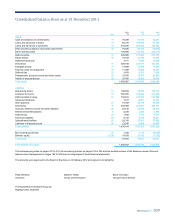 311
311 -
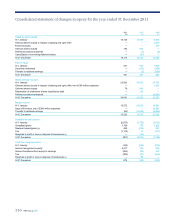 312
312 -
 313
313 -
 314
314 -
 315
315 -
 316
316 -
 317
317 -
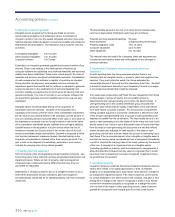 318
318 -
 319
319 -
 320
320 -
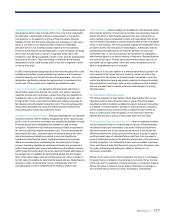 321
321 -
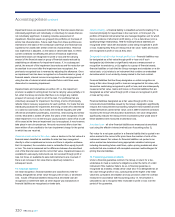 322
322 -
 323
323 -
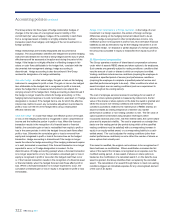 324
324 -
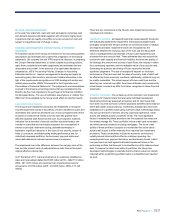 325
325 -
 326
326 -
 327
327 -
 328
328 -
 329
329 -
 330
330 -
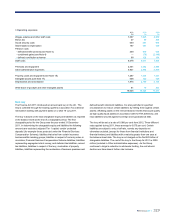 331
331 -
 332
332 -
 333
333 -
 334
334 -
 335
335 -
 336
336 -
 337
337 -
 338
338 -
 339
339 -
 340
340 -
 341
341 -
 342
342 -
 343
343 -
 344
344 -
 345
345 -
 346
346 -
 347
347 -
 348
348 -
 349
349 -
 350
350 -
 351
351 -
 352
352 -
 353
353 -
 354
354 -
 355
355 -
 356
356 -
 357
357 -
 358
358 -
 359
359 -
 360
360 -
 361
361 -
 362
362 -
 363
363 -
 364
364 -
 365
365 -
 366
366 -
 367
367 -
 368
368 -
 369
369 -
 370
370 -
 371
371 -
 372
372 -
 373
373 -
 374
374 -
 375
375 -
 376
376 -
 377
377 -
 378
378 -
 379
379 -
 380
380 -
 381
381 -
 382
382 -
 383
383 -
 384
384 -
 385
385 -
 386
386 -
 387
387 -
 388
388 -
 389
389 -
 390
390 -
 391
391 -
 392
392 -
 393
393 -
 394
394 -
 395
395 -
 396
396 -
 397
397 -
 398
398 -
 399
399 -
 400
400 -
 401
401 -
 402
402 -
 403
403 -
 404
404 -
 405
405 -
 406
406 -
 407
407 -
 408
408 -
 409
409 -
 410
410 -
 411
411 -
 412
412 -
 413
413 -
 414
414 -
 415
415 -
 416
416 -
 417
417 -
 418
418 -
 419
419 -
 420
420 -
 421
421 -
 422
422 -
 423
423 -
 424
424 -
 425
425 -
 426
426 -
 427
427 -
 428
428 -
 429
429 -
 430
430 -
 431
431 -
 432
432 -
 433
433 -
 434
434 -
 435
435 -
 436
436 -
 437
437 -
 438
438 -
 439
439 -
 440
440 -
 441
441 -
 442
442 -
 443
443 -
 444
444 -
 445
445 -
 446
446 -
 447
447 -
 448
448 -
 449
449 -
 450
450 -
 451
451 -
 452
452 -
 453
453 -
 454
454 -
 455
455 -
 456
456 -
 457
457 -
 458
458 -
 459
459 -
 460
460 -
 461
461 -
 462
462 -
 463
463 -
 464
464 -
 465
465 -
 466
466 -
 467
467 -
 468
468 -
 469
469 -
 470
470 -
 471
471 -
 472
472 -
 473
473 -
 474
474 -
 475
475 -
 476
476 -
 477
477 -
 478
478 -
 479
479 -
 480
480 -
 481
481 -
 482
482 -
 483
483 -
 484
484 -
 485
485 -
 486
486 -
 487
487 -
 488
488 -
 489
489 -
 490
490
 |
 |

RBS Group 2011 319
Designated as at fair value through profit or loss - financial assets may be
designated as at fair value through profit or loss only if such designation
(a) eliminates or significantly reduces a measurement or recognition
inconsistency; or (b) applies to a group of financial assets, financial
liabilities or both, that the Group manages and evaluates on a fair value
basis; or (c) relates to an instrument that contains an embedded
derivative which is not evidently closely related to the host contract.
Financial assets that the Group designates on initial recognition as being
at fair value through profit or loss are recognised at fair value, with
transaction costs being recognised in profit or loss, and are subsequently
measured at fair value. Gains and losses on financial assets that are
designated as at fair value through profit or loss are recognised in profit
or loss as they arise.
In 2009, financial assets designated as at fair value through profit or loss
included policyholders' assets underpinning insurance and investment
contracts issued by the Group's life assurance businesses. Fair value
designation significantly reduces the measurement inconsistency that
would arise if these assets were classified as available-for-sale.
Loans and receivables - non-derivative financial assets with fixed or
determinable repayments that are not quoted in an active market are
classified as loans and receivables, except those that are classified as
available-for-sale or as held-for-trading, or designated as at fair value
through profit or loss. Loans and receivables are initially recognised at
fair value plus directly related transaction costs. They are subsequently
measured at amortised cost using the effective interest method (see
Accounting policy 3) less any impairment losses.
Available-for-sale financial assets - financial assets that are not classified
as held-to-maturity; held-for-trading; designated as at fair value through
profit or loss; or loans and receivables are classified as available-for-sale.
Financial assets can be designated as available-for-sale on initial
recognition. Available-for-sale financial assets are initially recognised at
fair value plus directly related transaction costs. They are subsequently
measured at fair value. Unquoted equity investments whose fair value
cannot be measured reliably are carried at cost and classified as
available-for-sale financial assets. Impairment losses and exchange
differences resulting from retranslating the amortised cost of foreign
currency monetary available-for-sale financial assets are recognised in
profit or loss together with interest calculated using the effective interest
method (see Accounting policy 3) as are gains and losses attributable to
the hedged risk on available-for-sale financial assets that are hedged
items in fair value hedges (see Accounting policy 24). Other changes in
the fair value of available-for-sale financial assets and any related tax are
reported in other comprehensive income until disposal, when the
cumulative gain or loss is reclassified from equity to profit or loss.
Reclassifications - held-for-trading and available-for-sale financial assets
that meet the definition of loans and receivables (non-derivative financial
assets with fixed or determinable payments that are not quoted in an
active market) may be reclassified to loans and receivables if the Group
has the intention and ability to hold the financial asset for the foreseeable
future or until maturity. The Group typically regards the foreseeable future
as twelve months from the date of reclassification. Additionally, held-for-
trading financial assets that do not meet the definition of loans and
receivables may, in rare circumstances, be transferred to available-for-
sale financial assets or to held-to-maturity investments. Reclassifications
are made at fair value. This fair value becomes the asset's new cost or
amortised cost as appropriate. Gains and losses recognised up to the
date of reclassification are not reversed.
Fair value for a net open position in a financial asset that is quoted in an
active market is the current bid price times the number of units of the
instrument held. Fair values for financial assets not quoted in an active
market are determined using appropriate valuation techniques including
discounting future cash flows, option pricing models and other methods
that are consistent with accepted economic methodologies for pricing
financial assets.
16. Impairment of financial assets
The Group assesses at each balance sheet date whether there is any
objective evidence that a financial asset or group of financial assets
classified as held-to-maturity, available-for-sale or loans and receivables
is impaired. A financial asset or portfolio of financial assets is impaired
and an impairment loss incurred if there is objective evidence that an
event or events since initial recognition of the asset have adversely
affected the amount or timing of future cash flows from the asset.
Financial assets carried at amortised cost - if there is objective evidence
that an impairment loss on a financial asset or group of financial assets
classified as loans and receivables or as held-to-maturity investments
has been incurred, the Group measures the amount of the loss as the
difference between the carrying amount of the asset or group of assets
and the present value of estimated future cash flows from the asset or
group of assets discounted at the effective interest rate of the instrument
at initial recognition. For collateralised loans and receivables, estimated
future cash flows include cash flows that may result from foreclosure less
the costs of obtaining and selling the collateral, whether or not
foreclosure is probable.
Where, in the course of the orderly realisation of a loan, it is exchanged
for equity shares or property, the exchange is accounted for as the sale
of the loan and the acquisition of equity securities or investment property.
Where the Group’s interest in equity shares following the exchange is
such that the Group controls an entity, that entity is consolidated.
